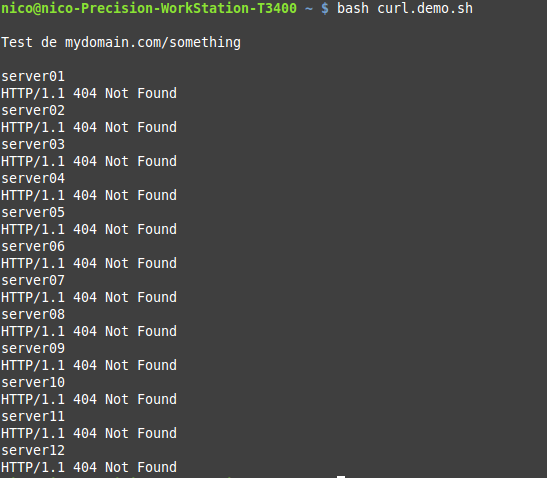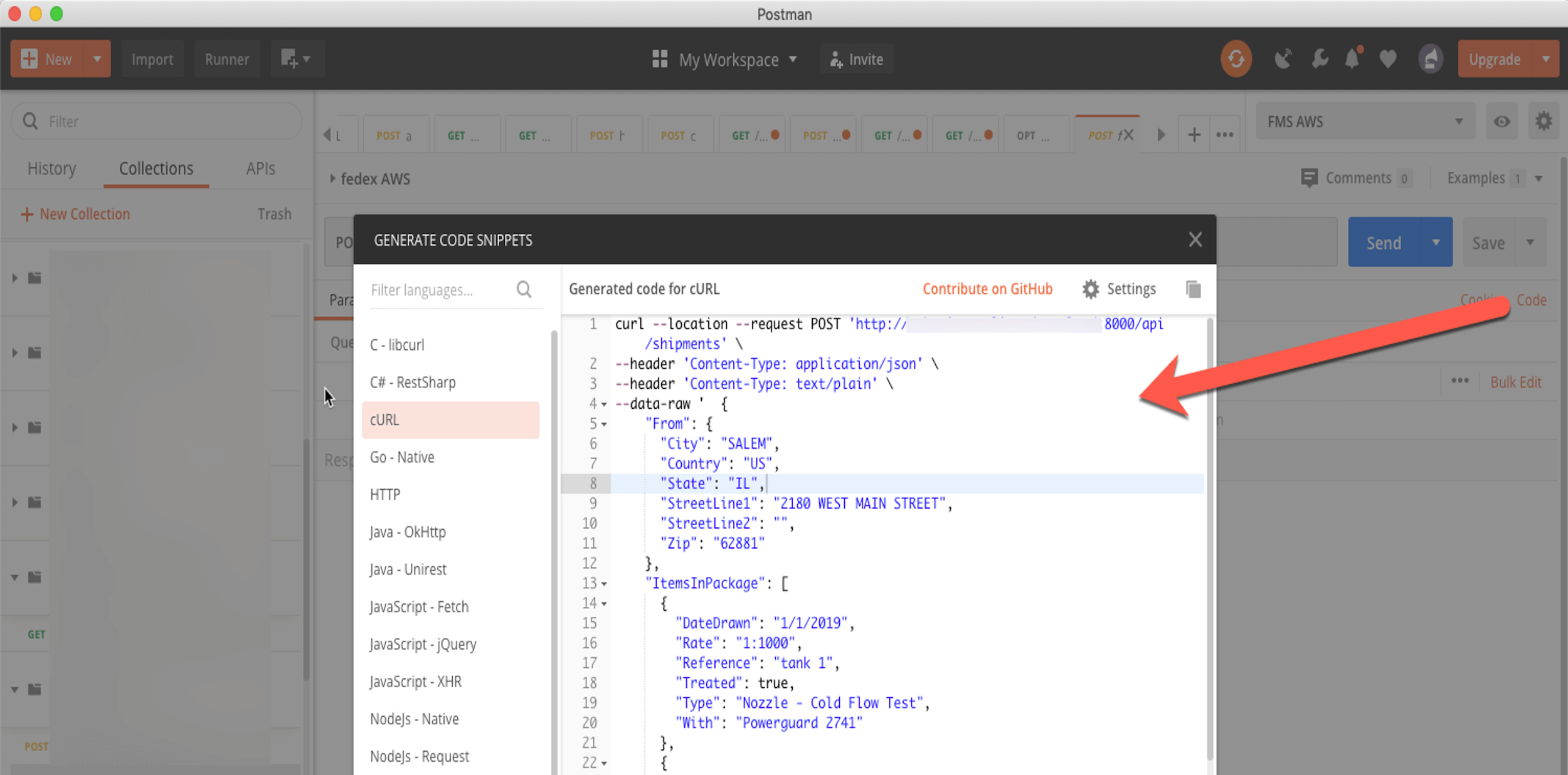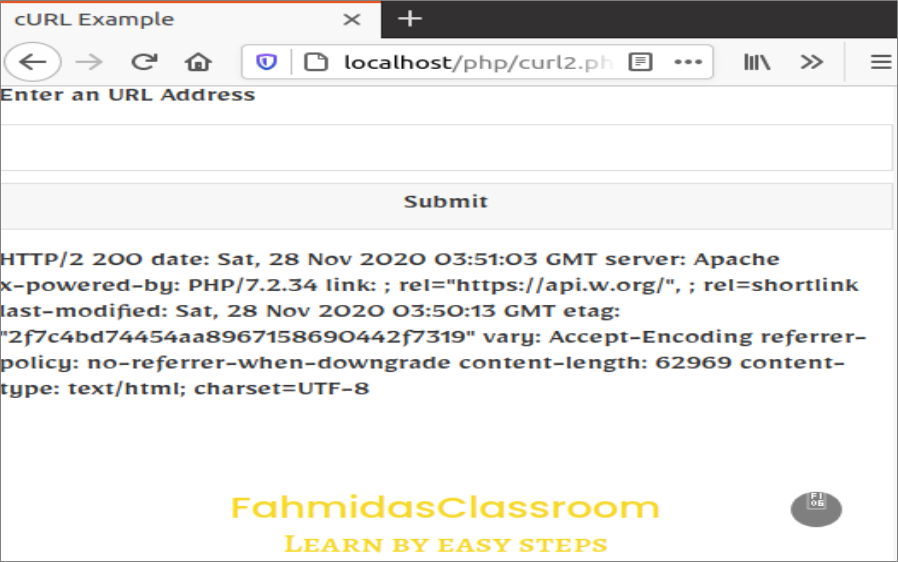Libcurl 7.63.0 or later allows applications to pass in a CURLU handle instead of a URL string to tell curl what to transfer to or from. This is particularly convenient for applications that already parse the URL and might have it stored in such a handle already. Curl url1 url2 url3 -O -O -O The same workaround should be done for any flag. This is because the first occurrence of a certain flag is for the first URL, the second flag is for the second URL and so on. Cain & abel software for mac download.
Everyone knows that on most systems you can specify IPv4 addresses just 4 decimal numbers separated with periods (dots). Example:
192.168.0.1
Useful when you for example want to ping your local wifi router and similar. “ping 192.168.0.1”
Other bases
The IPv4 string is usually parsed by the inet_addr() function or at times it is passed straight into the name resolver function like getaddrinfo().
This address parser supports more ways to specify the address. You can for example specify each number using either octal or hexadecimal.
Write the numbers with zero-prefixes to have them interpreted as octal numbers:
0300.0250.0.01
Write them with 0x-prefixes to specify them in hexadecimal:
0xc0.0xa8.0x00.0x01
You will find that ping can deal with all of these.
As a 32 bit number
An IPv4 address is a 32 bit number that when written as 4 separate numbers are split in 4 parts with 8 bits represented in each number. Each separate number in “a.b.c.d” is 8 bits that combined make up the whole 32 bits. Sometimes the four parts are called quads.
The typical IPv4 address parser however handles more ways than just the 4-way split. It can also deal with the address when specified as one, two or three numbers (separated with dots unless its just one).
If given as a single number, it treats it as a single unsigned 32 bit number. The top-most eight bits stores what we “normally” with write as the first number and so on. The address shown above, if we keep it as hexadecimal would then become:
0xc0a80001
And you can of course write it in octal as well:
030052000001
Curl Url Encode
and plain old decimal:
3232235521
As two numbers
If you instead write the IP address as two numbers with a dot in between, the first number is assumed to be 8 bits and the next one a 24 bit one. And you can keep on mixing the bases as you see like. Mac software download, free. full version. The same address again, now in a hexadecimal + octal combo:
0xc0.052000001
This allows for some fun shortcuts when the 24 bit number contains a lot of zeroes. Like you can shorten “127.0.0.1” to just “127.1” and it still works and is perfectly legal.
As three numbers
Now the parts are supposed to be split up in bits like this: 8.8.16. Here’s the example address again in octal, hex and decimal:
0xc0.0250.1
Bypassing filters
All of these versions shown above work with most tools that accept IPv4 addresses and sometimes you can bypass filters and protection systems by switching to another format so that you don’t match the filters. It has previously caused problems in node and perl packages and I’m guessing numerous others. It’s a feature that is often forgotten, ignored or just not known.
It begs the question why this very liberal support was once added and allowed but I’ve not been able to figure that out – maybe because of how it matches class A/B/C networks. The support for this syntax seems to have been introduced with the inet_aton() function in the 4.2BSD release in 1983.
IPv4 in URLs
URLs have a host name in them and it can be specified as an IPv4 address.
RFC 3986
The RFC 3986 URL specification’s section 3.2.2 says an IPv4 address must be specified as:
… but in reality very few clients that accept such URLs actually restrict the addresses to that format. I believe mostly because many programs will pass on the host name to a name resolving function that itself will handle the other formats.
The WHATWG URL Spec
The Host Parsing section of this spec allows the many variations of IPv4 addresses. (If you’re anything like me, you might need to read that spec section about three times or so before that’s clear).
Since the browsers all obey to this spec there’s no surprise that browsers thus all allow this kind of IP numbers in URLs they handle.
curl before
curl has traditionally been in the camp that mostly accidentally somewhat supported the “flexible” IPv4 address formats. It did this because if you built curl to use the system resolver functions (which it does by default) those system functions will handle these formats for curl. If curl was built to use c-ares (which is one of curl’s optional name resolver backends), using such address formats just made the transfer fail.
The drawback with allowing the system resolver functions to deal with the formats is that curl itself then works with the original formatted host name so things like HTTPS server certificate verification and sending Host: headers in HTTP don’t really work the way you’d want.
curl now
Starting in curl 7.77.0 (since this commit ) curl will “natively” understand these IPv4 formats and normalize them itself.

There are several benefits of doing this ourselves:

- Applications using the URL API will get the normalized host name out.
- curl will work the same independently of selected name resolver backend
- HTTPS works fine even when the address is using other formats
- HTTP virtual hosts headers get the “correct” formatted host name
Fun example command line to see if it works:
16843009 gets normalized to 1.1.1.1 which then gets used as http://1.1.1.1 (because curl will assume HTTP for this URL when no scheme is used) which returns a 301 redirect over to https://1.1.1.1/ which -L makes curl follow…
Credits
Adobe captivate 8 mac free. download full version with crack. Image by Thank you for your support Donations welcome to support from Pixabay
A reference guide to making GET, POST, PUT, PATCH, and DELETE API calls through the command line via cURL and their Postman equivalents.
Postman is an API testing environment. cURL is a command line tool for transfering data via URLs. When it comes to REST APIs, we can use Postman as a GUI (graphical user interface) and cURL as a CLI (command line interface) to do the same tasks.
Prerequisites
If you don't yet understand REST or know how to use REST APIs, please read Understanding REST and REST APIs.

Goals
I'm going to demonstrate how to do GET, POST, PUT, PATCH, and DELETE requests via Postman and cURL. If you don't have Postman, simply download it from the website. cURL should already be installed in your macOS or Linux environment.
Endpoints

I'm going to use JSON Placeholder, an awesome example site for testing API calls. You can follow along and paste all the commands into your terminal to see what response you get.
Here is the map of methods to endpoints we'll be using. /posts means all, and the 1 in /posts/1 represents /posts/{id}, so ID number1.
| Method | Endpoint |
|---|---|
GET | https://jsonplaceholder.typicode.com/posts |
POST | https://jsonplaceholder.typicode.com/posts |
PUT | https://jsonplaceholder.typicode.com/posts/1 |
PATCH | https://jsonplaceholder.typicode.com/posts/1 |
DELETE | https://jsonplaceholder.typicode.com/posts/1 |
You can click those URLs to see the GET values they provide to the browser. You can use the browser for GET, but you'll have to use cURL or Postman to POST, PUT, PATCH or DELETE.
cURL CLI arguments
Here are a few cURL argument we'll pass with our requests. All requests will simply be curl followed by the argument and data to pass.
-X --request- Custom request method-d --data- Sends the specified data-H --header- Sends headers-i --include- Display response headers
GET
GET retrieves data.
You can also use curl -i to get more information from the headers.
All you have to do for Postman is paste the URL, select GET, and send.
POST
POST creates a new resource. It is non-idempotent, meaning that two identical POST requests will create two new resources.
There are two ways to do this via Postman. After selecting POST, you can go to Body, select x-www-form-urlencoded, and type each individual value in. If you go to Headers, you'll see Content-Type: application/x-www-form-urlencoded.
Or you can go to Body, select raw, select JSON, and send the actual JSON you intend to send. If you go to Headers, you'll see Content-Type: application/json.
PUT
PUT updates an existing resource. It is idempotent, meaning that two identical PUT requests will modify the same resource. A PUT request requires the entire body to be sent through; if any data is missing, that data will be wiped (except automatic values like auto-incrementing IDs and timestamps).

Curl Url Malformed
Sending the values is the same as with POST.
Curl Url Encode
PATCH
PATCH updates an existing resource, and does not require sending the entire body with the request.
No change to sending the values.
DELETE
DELETE removes a resource.
No values to send.
Authentication
If you need to send additional headers, like Authorization: Bearer or x-jwt-assertion for JWT-based authentication, you can do it through cURL like this.
In Postman, you'll go to Headers and add Authorization as the key and Bearer <JWT_TOKEN> as the value to send authentication values. You can also go to Headers, click Presets, Manage Presets, and put your own reusable variables in for any headers or values you'll be reusing a lot.
Conclusion
This guide provides all the basics for getting started with testing your APIs, either through Postman's GUI or cURL's CLI, using JSON or urlencoded form data.
